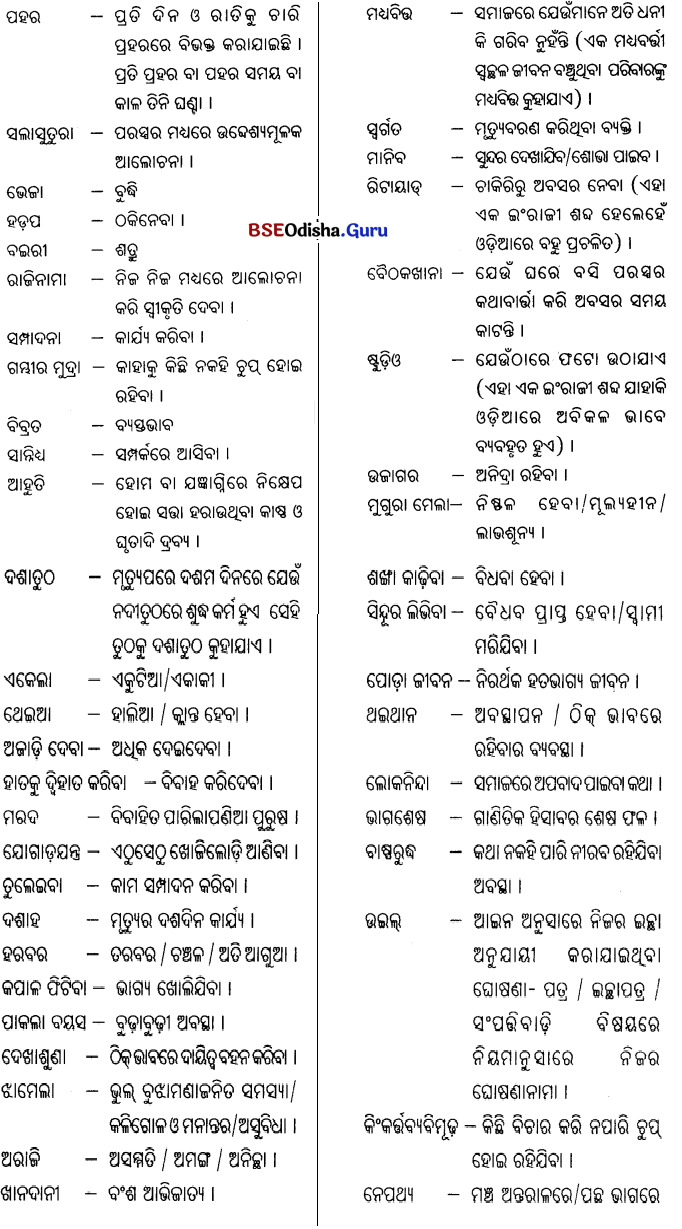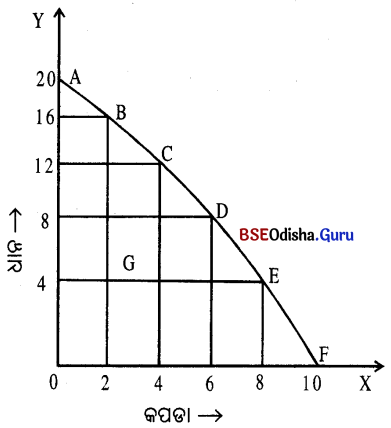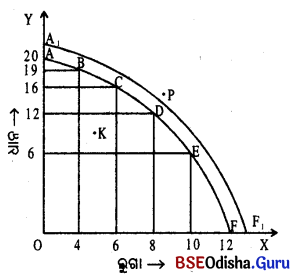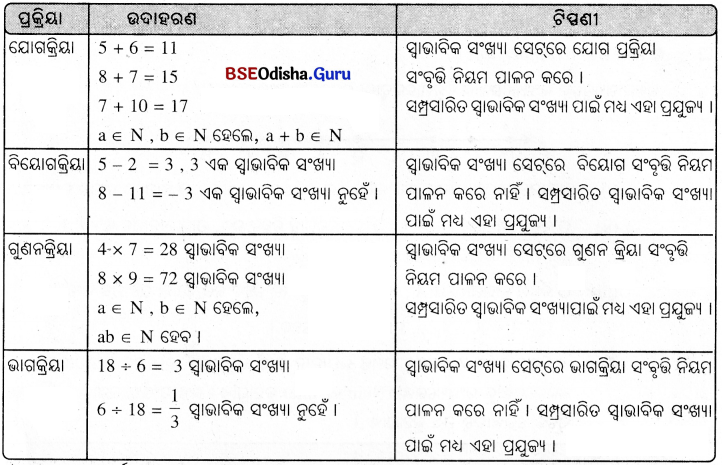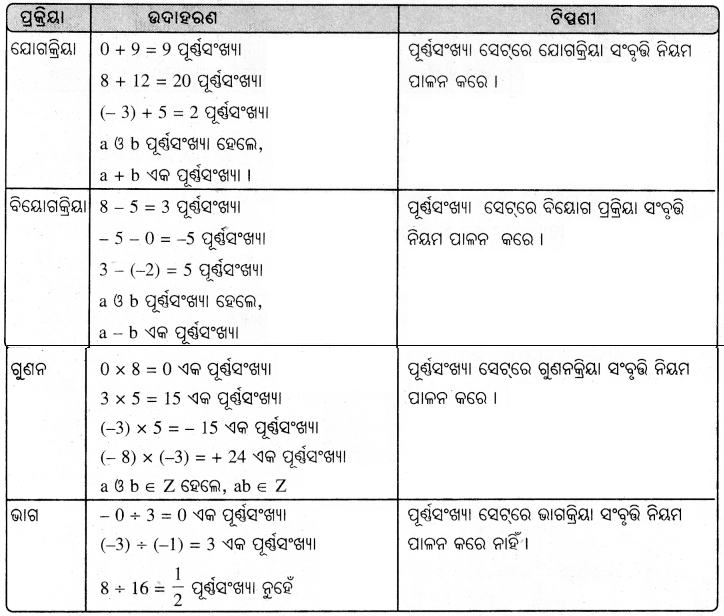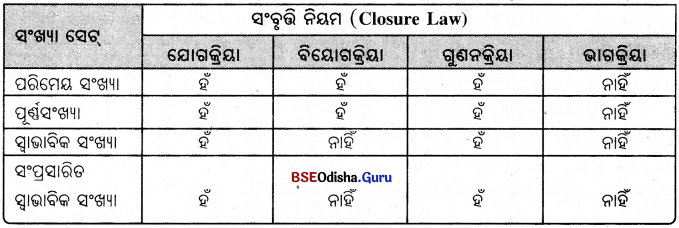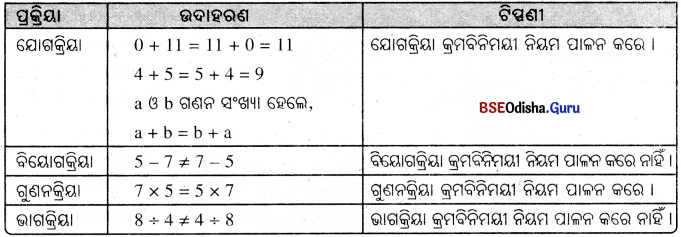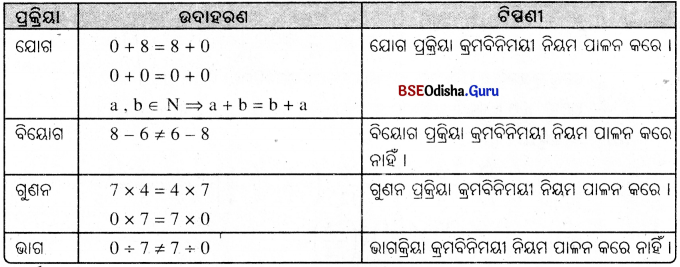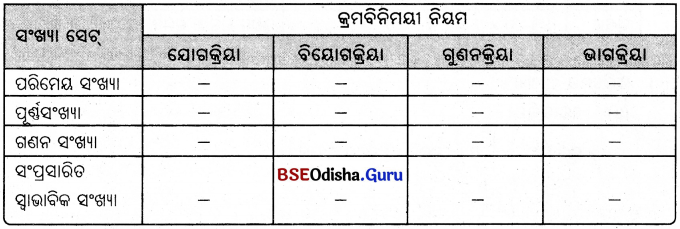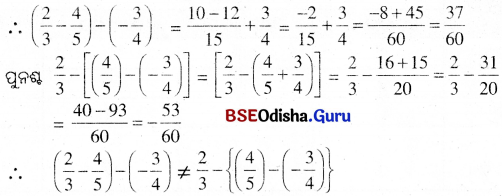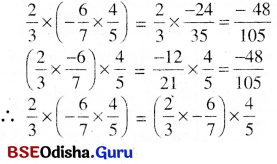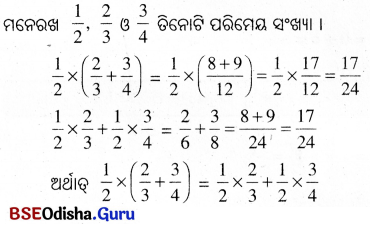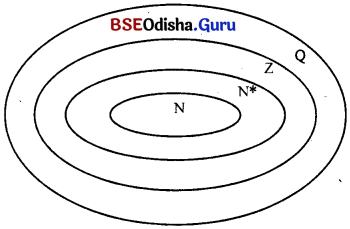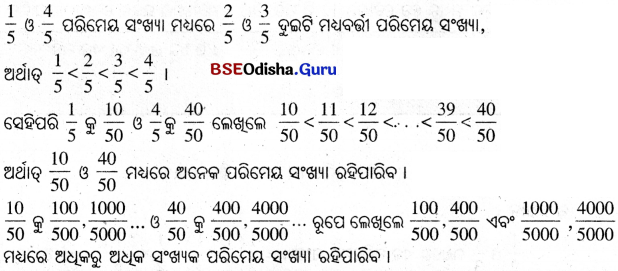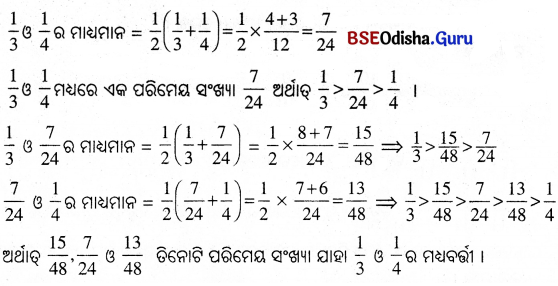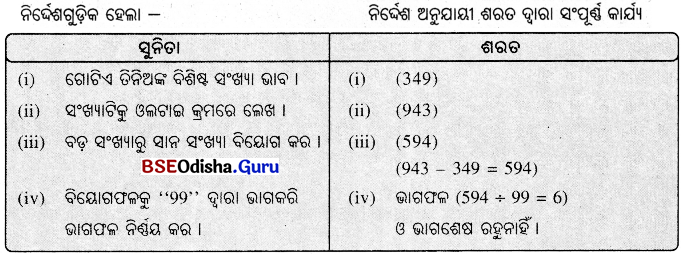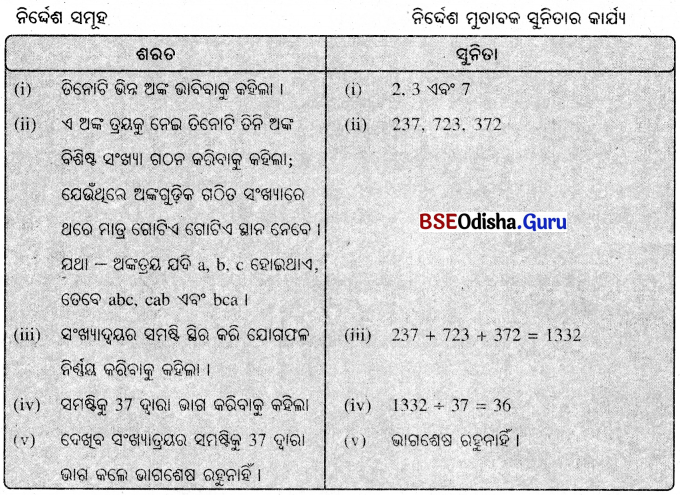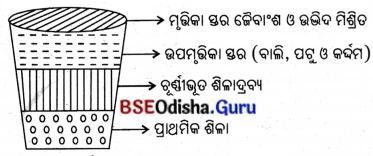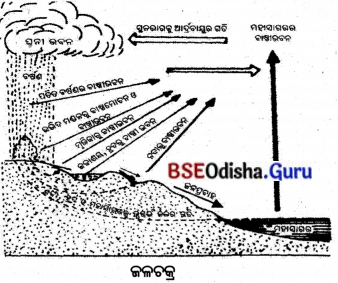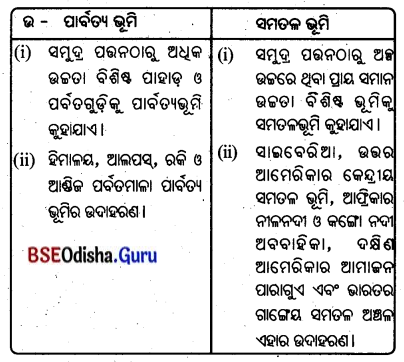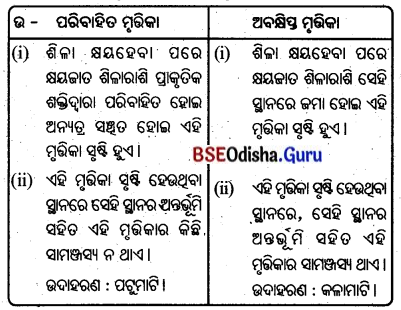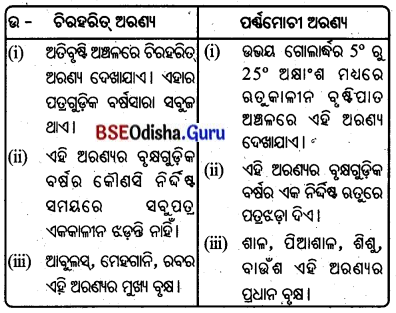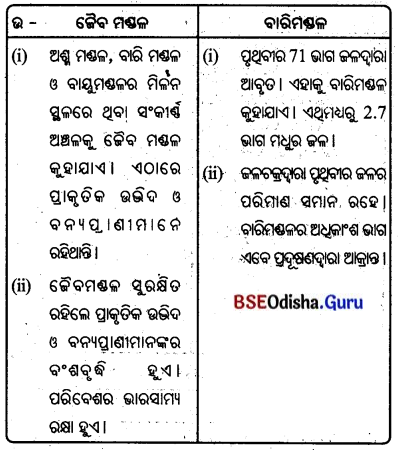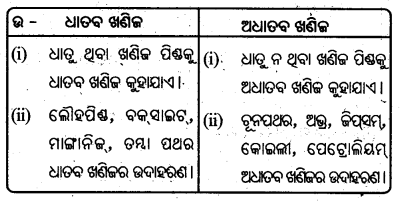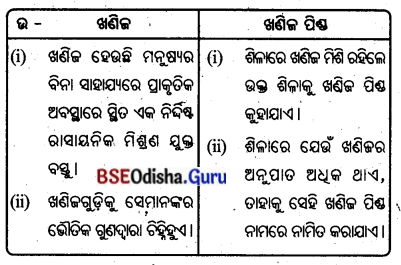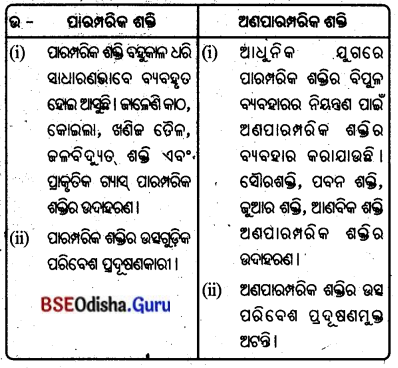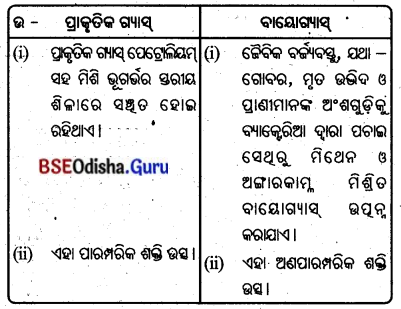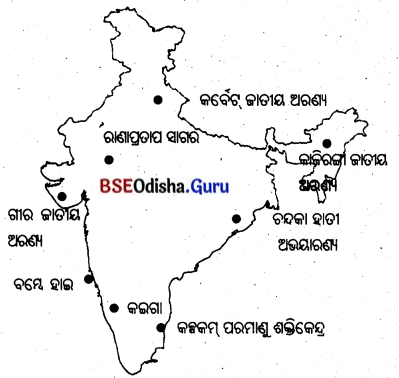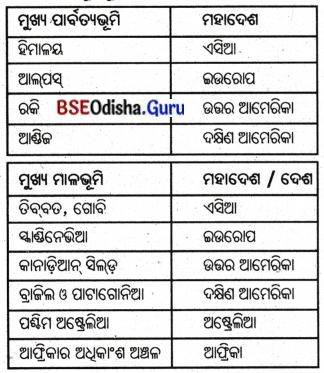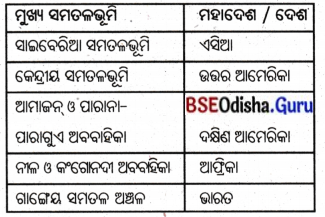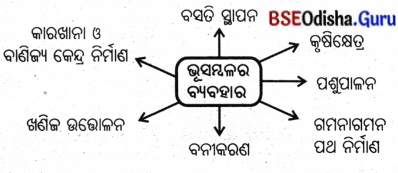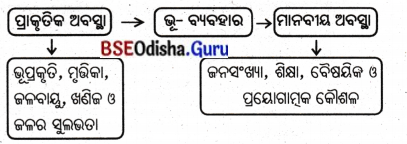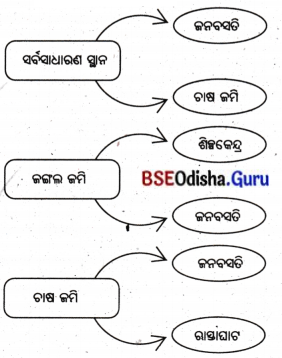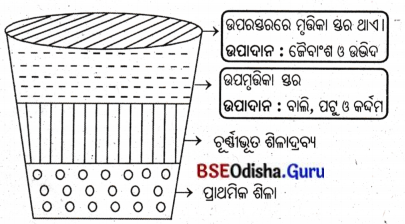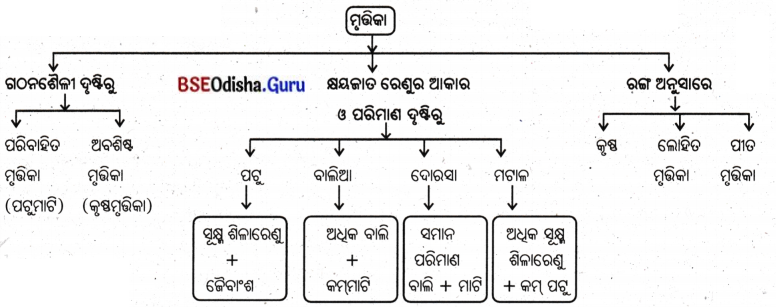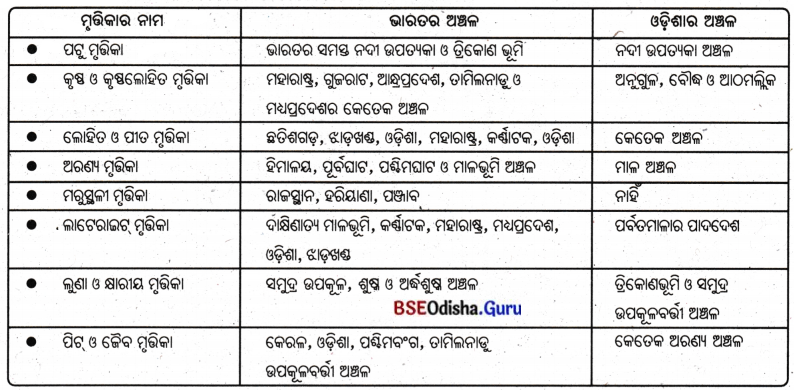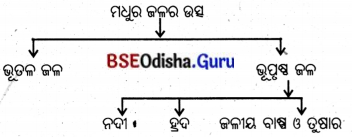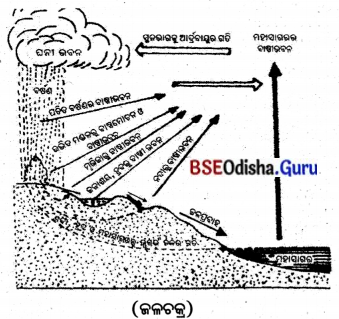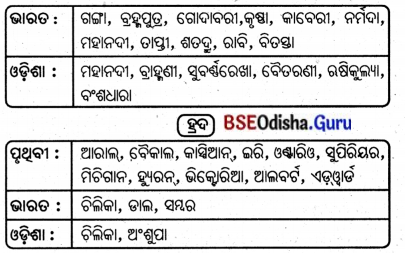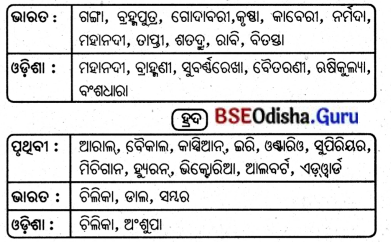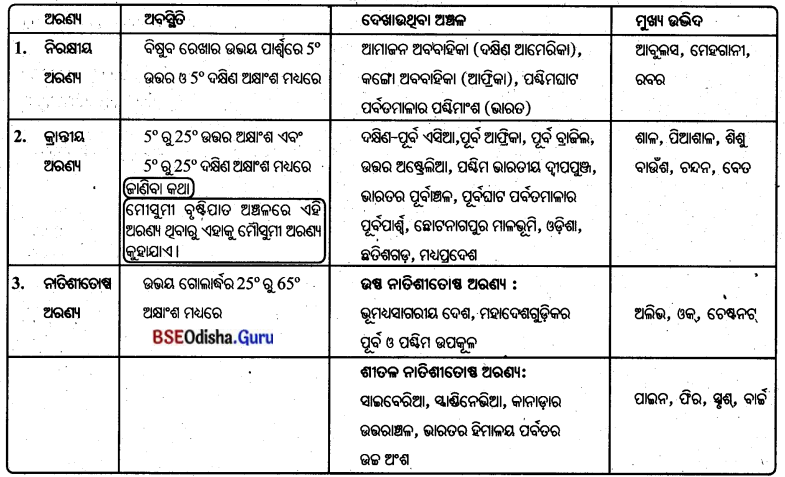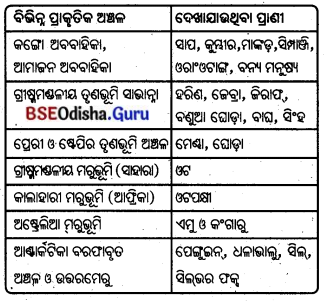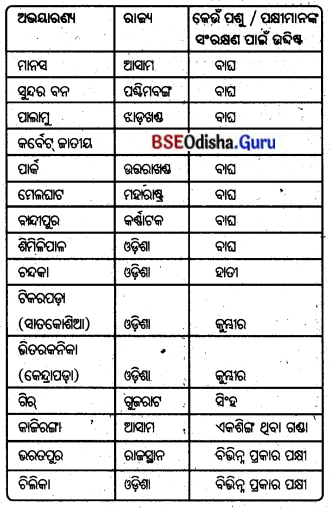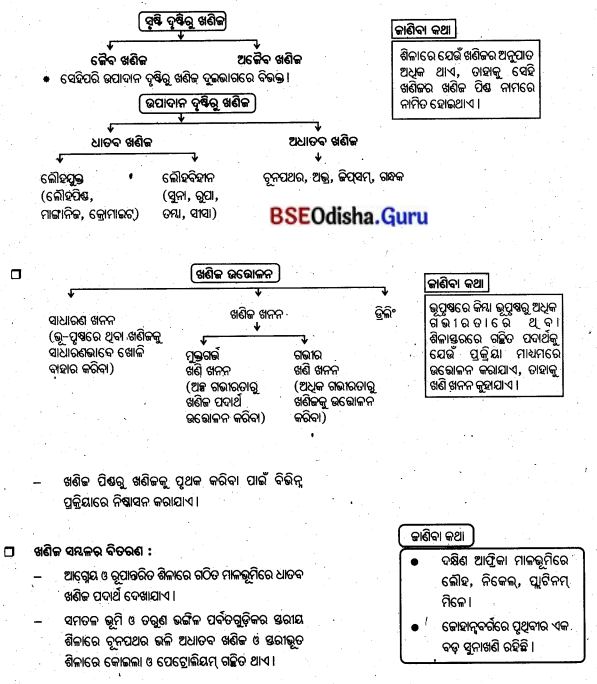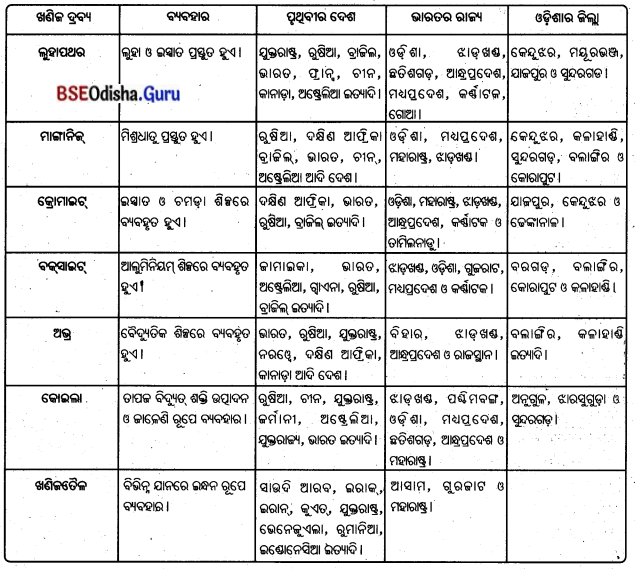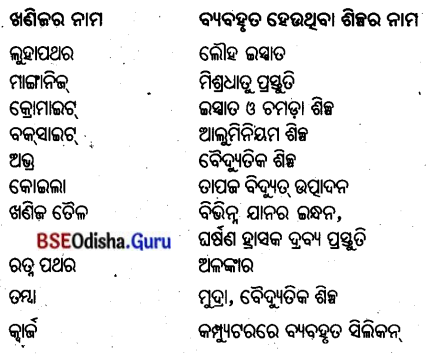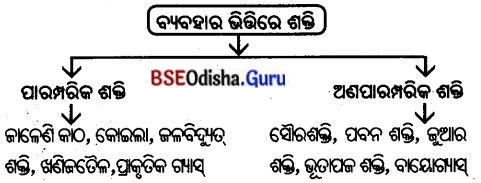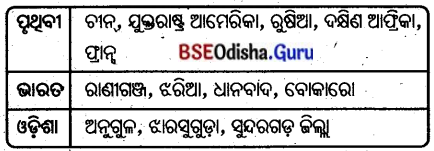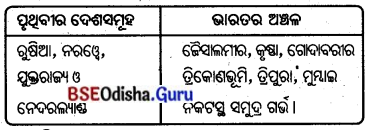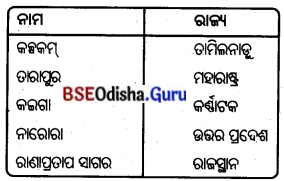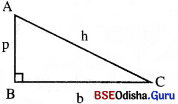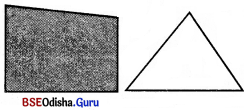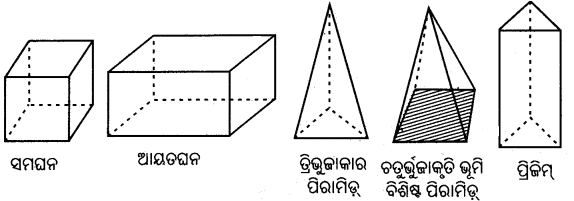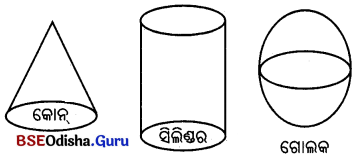Odisha State Board BSE Odisha 8th Class Odia Solutions Chapter 15 ଆହୁତି Textbook Exercise Questions and Answers.
BSE Odisha Class 8 Odia Solutions Chapter 15 ଆହୁତି
ପାଠ୍ୟପୁସ୍ତକସ୍ଥ ଅଭ୍ୟାସ କାର୍ଯ୍ୟର ଉତ୍ତର
Question ୧ ।
ଆସ, କଥାବାର୍ତ୍ତାହେବା ।
(କ) ବାପାଙ୍କ ଫଟୋକୁ ଦାଣ୍ଡଘରେ କାହିଁକି ଟଙ୍ଗାହେଲା?
Answer:
ଯେହେତୁ ବାପା ସବୁବେଳେ ଦାଣ୍ଡଘର ବା ବୈଠକଖାନାରେ ବସି ରହୁଥିଲେ ଏବଂ ସେଠାରେ ସେ ଖୁସିରେ ଥିଲେ, ସେଥିପାଇଁ ତାଙ୍କର ମୃତ୍ୟୁପରେ ବାପାଙ୍କ ଫଟୋକୁ ଦାଣ୍ଡଘରେ ଟଙ୍ଗା ହୋଇଥିଲା ।
(ଖ) ଚଞ୍ଚଳା ଝିଅ ବାହାଘର ପାଇଁ ବ୍ୟସ୍ତ ହେଉଥୁଲେ କାହିଁକି?
Answer:
ବଡ଼ବୋହୂ ଚଞ୍ଚଳାଙ୍କର ଥିଲେ ପାଞ୍ଚ ଝିଅ ଏବଂ ବଡ଼ଝିଅର ବାହାଘର ପାଇଁ ମିଳିଥିବା ସୁନ୍ଦର ଘର ଓ ଗୁଣର ବରକୁ ସେ ହାତଛଡ଼ା କରିବାକୁ ଚାହୁଁ ନଥିଲେ, ସେଥିପାଇଁ ଝିଅ ବାହାଘର ପାଇଁ ସେ ବ୍ୟସ୍ତ ହେଉଥିଲେ ।
![]()
(ଗ) ଦେବେନ୍ଦ୍ରଙ୍କୁ ରାଜେନ୍ଦ୍ର ଟଙ୍କା ମାଗିବାର କାରଣ କ’ଣ ଥିଲା?
Answer:
ପୂଜାରୀଟା ଯାହା ସଉଦା ବରାଦ ଦବ ସେତକ ଆଣିବାପାଇଁ କିଛି ଟଙ୍କା ଦରକାର ହେଉଥିଲା । ତେଣୁ ରାଜେନ୍ଦ୍ର ଦେବେନ୍ଦ୍ରଙ୍କୁ ଟଙ୍କା ମାଗିଥିଲା ।
(ଘ) ଚଞ୍ଚଳାଙ୍କ କଥାରେ ଦେବେନ୍ଦ୍ର କାହିଁକି ଚମକି ପଡ଼ିଥିଲେ?
Answer:
ବାପାଙ୍କ ମୃତ୍ୟୁ ପରେ ଓ ପୁଅମାନେ ବାହାରେ ରହୁଥିବାରୁ, କାଳେ ଗାଁର ସମ୍ପତ୍ତିବାଡ଼ି ଭାଇଭଗାରି ମାଡ଼ିବସିବେ, ଚୋର ଡକେଇତ ସମ୍ପତ୍ତି ପାଇଁ ମା’କୁ ମାରିଦେବେ, ଚଞ୍ଚଳା ମୁହଁରୁ ଏପରି କଥା ଶୁଣି ଦେବେନ୍ଦ୍ର ଚମକି ପଡ଼ିଲେ ।
(ଙ) ମା’ଙ୍କୁ କେଉଁ କଥା ବୁଝାଇ ହେବ ନାହିଁ ବୋଲି ମହେନ୍ଦ୍ର କହିଥିଲେ?
Answer:
ବାପାଙ୍କ ମୃତ୍ୟୁପରେ ମହେନ୍ଦ୍ର ଓ କୁନି ମା’କୁ ବୁଝେଇ ବୁଝେଇ ଥକି ପଡ଼ିଥିଲେ ବି ମା’ଙ୍କର କାନ୍ଦ ବନ୍ଦ ହେଉନଥିଲା କିମ୍ବା ମା’କିଛି ବୁଝୁନଥିଲେ । ଯେତେ କନ୍ଦାକଟା କଲେ କି ଛେଚି କଚାଡ଼ି ହେଲେ ବାପା କ’ଣ ଆଉ ଫେରି ଆସିବେ । ଏକଥା ମା’ଙ୍କୁ ବୁଝାଇ ହେବନାହିଁ ବୋଲି ମହେନ୍ଦ୍ର ବଡ଼ଭାଇ ଦେବେନ୍ଦ୍ରଙ୍କୁ କହିଥିଲେ ।
Question ୨ ।
ଆସ, ତଳେ ଦିଆଯାଇଥିବା ପ୍ରତି ପ୍ରଶ୍ନର ଉତ୍ତର ଦୁଇ ବା ତିନୋଟି ଲେଖାଏଁ ବାକ୍ୟରେ ଲେଖୁବା ।
(କ) ‘ମୁଗୁରାମେଲା’ ବୋଲି ଚଞ୍ଚଳା କାହିଁକି କହିଥିଲେ?
Answer:
ସାରାରାତି ଉଜାଗର ରହି ପନ୍ଥୀ ଚଞ୍ଚଳା ସ୍ଵାମୀ ଦେବେନ୍ଦ୍ରଙ୍କୁ ବାପାଙ୍କ ସମ୍ପତ୍ତି ଭାଗବଣ୍ଟା ବିଷୟରେ ମା’ଙ୍କୁ ଓ ଭାଇମାନଙ୍କୁ ବୁଝେଇ ରାଜି କରାଇବାକୁ କହିଥିଲେ । ମାତ୍ର ଦେବେନ୍ଦ୍ର ତାହା ନକରି, ବୈଠକଖାନାରେ ବାପାଙ୍କ ଫଟୋ ଟଙ୍ଗା କରାମରେ ବ୍ୟସ୍ତ ଥିବା ଦେଖ୍, ଚଞ୍ଚଳା ଦେବୀ ‘ମୁଗୁରାମେଲା’ ବୋଲି କହିଥିଲେ । ଅର୍ଥାତ୍ ସେ ରାତିସାରା ଉଜାଗର ରହି ଯାହାସବୁ କରିବାକୁ କହିଥିଲେ ଦେବେନ୍ଦ୍ର ସେ ଦିଗରେ କିଛି ଚେଷ୍ଟା କରିନଥିଲା ।
(ଖ) ରାଜେନ୍ଦ୍ରଙ୍କ ପାଖରେ ନିଜ ମନ କଥା କହିବାକୁ ଚଞ୍ଚଳା କିପରି ଛଳନା କରିଥିଲେ?
Answer:
ନିଜର ସୁବିଧା ପାଇଁ ବାପାଙ୍କ ସମ୍ପତ୍ତି କିପରି ଯଥାଶୀଘ୍ର ତିନିଭାଇଙ୍କ ମଧ୍ୟରେ ଭାଗବଣ୍ଟା ହୋଇପାରିବ, ସେଥିପାଇଁ ରାଜେନ୍ଦ୍ରଙ୍କୁ ରାଜି କରାଇବା ଉଦ୍ଦେଶ୍ୟରେ ଚଞ୍ଚଳା ଛଳନାର ଆଶ୍ରୟ ନେଇଥିଲେ । ସେ ଚତୁରତାର ସହିତ ରାଜେନ୍ଦ୍ରଙ୍କୁ କହିଥିଲେ ଯେ ପ୍ୟାକ୍ଟରୀଟିଏ କରିବାପାଇଁ ତାଙ୍କର ଟଙ୍କା ଯୋଗାଡ଼ କରିବା ଦରକାର । ତେଣୁ ବାପାଙ୍କ ସମ୍ପତ୍ତି ବଣ୍ଟା ହୋଇଗଲେ ସେ ଆବଶ୍ୟକ ଟଙ୍କା ପାଇପାରିବେ ।
(ଗ) ଭାଇଭାଗ ସମ୍ପର୍କରେ ଦେବେନ୍ଦ୍ର କ’ଣ କହିଥିଲେ?
Answer:
ଭାଇଭାଗ ସମ୍ପର୍କରେ ଦେବେନ୍ଦ୍ର ତିନୋଟି କଥା କହିଥିଲେ । ପ୍ରଥମ କଥା ଥିଲା ପୁରୁଣା ଖାନଦାନୀ ଘର ସହିତ ଖଞ୍ଜାଟିକୁ ମହେନ୍ଦ୍ର ନେବ । ଦ୍ଵିତୀୟ କଥା ଥିଲା, ପୋଖରୀ ସହିତ ତୋଟାକୁ ରାଜେନ୍ଦ୍ର ନେବ ଏବଂ ତୃତୀୟ କଥା ଥିଲା ଚାଷ ଜମିତକ ନିଜେ ଦେବେନ୍ଦ୍ର ନେବେ ।
(ଘ) ଦେବେନ୍ଦ୍ରଙ୍କୁ ମା’ କ’ଣ କହିଥିଲେ?
Answer:
ଦେବେନ୍ଦ୍ରଙ୍କୁ ମା’ କହିଥିଲେ, ଭାଇମାନେ ବାପା ସମ୍ପତ୍ତି ବାଣ୍ଡ କଲାବେଳେ, ଗୋଟିଏ ବୋଲି ଭଉଣୀ କୁନି କଥାକୁ ବିଚାର କରିବାପାଇଁ, କାରଣ ବାହାସାହା ହୋଇ ପରଘରକୁ ଚାଲିଗଲେ ବି ତା’ର ମଧ୍ୟ ବାପା ସମ୍ପତ୍ତି ଉପରେ ଭାଗ ରହିଛି । ତା’ ଭାଗଟାକୁ ଯେମିତି ଭାଇମାନେ ଭାଗବଣ୍ଟା ବେଳେ ବୁଡ଼େଇ ନ ଦିଅନ୍ତି, ସେଥ୍ୟପ୍ରତି ଧ୍ୟାନ ଦେବାକୁ ମା’ ଦେବେନ୍ଦ୍ରଙ୍କୁ କହିଥିଲେ ।
(ଙ) ମା’ଙ୍କୁ ପାଖରେ ରଖୁବାକୁ କୁନି ମନାକଲେ କାହିଁକି?
Answer:
ମା’ଙ୍କୁ ପାଖରେ ନ ରଖୁବାପାଇଁ କୁନି ଚତୁରତାର ସହିତ କହିଲା, ମା’ଙ୍କୁ ପାଖରେ ରଖିଲେ ସବୁଠୁ ସେ ବେଶି ଖୁସି ହୁଅନ୍ତା । ମାତ୍ର ସେ ମା’ଙ୍କୁ ପାଖରେ ରଖିଲେ ଲୋକମାନେ ନିନ୍ଦା କରିବେ । ପୁଅମାନେ ଥାଉ ଥାଉ ମା’ଝିଅ ଜୋଇଁଙ୍କ ଘରେ ରହିଲେ, ଲୋକନିନ୍ଦା ହେବ ଏବଂ ଏହି କାରଣରୁ ମା’ଙ୍କୁ ପାଖରେ ରଖୁବାକୁ କୁନି ମନା କରିଥିଲେ ।
Question ୩ ।
ତଳେ ଦିଆଯାଇଥିବା ବାକ୍ୟକୁ ଉତ୍ତର ସରଳ ଭାଷାରେ ବୁଝାଇ ଲେଖ ।
(କ) ଏଡ଼େ ସୁନ୍ଦର ଘର…….. ଏଡ଼େ ଗୁଣର ବରକୁ ଛାଡ଼ିଦେଲେ, ତମ ଝିଅର କପାଳ ତ ଫିଟିବନି, ହେଲେ ଜରୁର ଫାଟିବ – ମୁଁ କହି ରଖୁଛି, ହଁ…………!
Answer:
‘‘ଏଡ଼େ ସୁନ୍ଦର ଘ ……………… ମୁଁ କହିରଖୁଚି, ହଁ ………………. !’’
ଆଲୋଚ୍ୟ ଉକ୍ତିଟି ନାଟ୍ୟକାର କାର୍ତ୍ତିକ ଚନ୍ଦ୍ର ରଥଙ୍କ ‘ଆହୁତି’ ଏକାଙ୍କିକାରୁ ଆସିଅଛି । ଏଠାରେ ନାଟ୍ୟକାର ବଡ଼ବୋହୂ ଚଞ୍ଚଳା ଚରିତ୍ର ମାଧ୍ୟମରେ, ସ୍ଵାର୍ଥାନ୍ଵେଷୀ ନାରୀର ସଂକୀର୍ଣ୍ଣ ମାନସିକତାକୁ ଯଥାର୍ଥ ଭାବରେ ରୂପ ଦେଇଛନ୍ତି । ବଡ଼ବୋହୂ ଚଞ୍ଚଳା ଥିଲେ ସଂକୀର୍ଣ୍ଣମନା । ଶ୍ଵଶୁରଙ୍କ ଶୁଦ୍ଧିକ୍ରିୟାରେ ଯୋଗ ଦେବାକୁ ଆସି, ଦଶାହ କାମ କିପରି ସୁରୁଖୁରରେ ହେବ, ସେ କଥା ଚିନ୍ତା କରିନାହାଁନ୍ତି । ଶାଶୁଙ୍କୁ ବୁଝାସୁଝା କରିବାକୁ ଚେଷ୍ଟା କରିନାହାଁନ୍ତି । କେବଳ ନିଜ ସ୍ୱାର୍ଥ କଥା ଚିନ୍ତା କରିଛନ୍ତି । ଭାଇଭାଗ ନେଇ, ନିଜର ପ୍ରସ୍ତାବିତ ଝିଅ ବାହାଘର କରିବା କଥା ବିଚାର କରିଛନ୍ତି । ବଡ଼ଝିଅର ବାହାଘର ପାଇଁ ସୁନ୍ଦର ଘର ଓ ଗୁଣର ବର ମିଳିଛି । ବିଳମ୍ବ ହେଲେ ହୁଏତ ସେହି ପ୍ରସ୍ତାବ ହାତଛଡ଼ା ହୋଇଯିବ ବୋଲି ସେ ଆଶଙ୍କା କରିଛନ୍ତି । ସେଠାରେ ଝିଅ ବାହାଘର ନକଲେ ଝିଅର କପାଳ ଫାଟିବ ବୋଲି କହିଛନ୍ତି । କାରଣ ଏତେ ସୁନ୍ଦର ଘର ଓ ଗୁଣର ବର ସେ ଆଉ ପାଇବେ ନାହିଁ । ଏଭଳି ଆଶଙ୍କା କରି ଚଞ୍ଚଳା ବ୍ୟସ୍ତ ହୋଇଛନ୍ତି ଓ ଦେବେନ୍ଦ୍ରଙ୍କୁ ବୁଝାଇବାକୁ ଚେଷ୍ଟା କରିଛନ୍ତି ।
![]()
(ଖ) ଆଜିଠୁ ସେ ସବୁ ଝାମେଲା ତୁଟେଇ ନଦେଲେ, ତୁମର ଏଇ ଯୋଉ ଭାଇ ନା………….ଛାଡ଼ ।
Answer:
ଆଜିଠୁ ସେ ସବୁ ……………….. ନା……………. ଛାଡ଼ ।’’
ଆଲୋଚ୍ୟ ଉକ୍ତିଟି ନାଟ୍ୟକାର କାର୍ତ୍ତିକ ଚନ୍ଦ୍ର ରଥଙ୍କ ‘ଆହୁତି’ ଏକାଙ୍କିକାରୁ ଆସିଅଛି । ଏଠାରେ ନାଟ୍ୟକାର ବଡ଼ବୋହୂ ଚଞ୍ଚଳା ଚରିତ୍ର ମାଧ୍ୟମରେ ସୁବିଧାବାଦୀ ନାରୀର ଚତୁରୀ କଥାକୁ ସୁନ୍ଦର ଭାବରେ ଉପସ୍ଥାପନ କରିଛନ୍ତି ।ବଡ଼ବୋହୂ ଚଞ୍ଚଳା, ଶ୍ଵଶୁରଙ୍କ ଦଶାହ କର୍ମକୁ ଆସି, ନିଜର ସୁବିଧାବାଦୀ ଚିନ୍ତାଧାରାକୁ ସଫଳ କରିବାକୁ ଚାହିଁଛି । ସେ ପ୍ରଥମେ ନିଜର ସ୍ଵାମୀ ଦେବେନ୍ଦ୍ରକୁ ରାତିସାରା ଭାଇଭାଗ କଥା ବୁଝାଇ କହିଛି । ମାତ୍ର ଦେବେନ୍ଦ୍ର ସେ ସମ୍ବନ୍ଧରେ ଆଗ୍ରହ ପ୍ରକାଶ ନ କରିବାରୁ, ଚଞ୍ଚଳା ନିଜେ ଦିଅର ରାଜେନ୍ଦ୍ରକୁ ବୁଝାଇବାକୁ ଚାହିଁଛି । ନିଜର ଉଦ୍ଦେଶ୍ୟକୁ ଗୋପନ ରଖୁ, ବରଂ ଦିଅରରର ସୁବିଧା କଥାକୁ ଆଗେ କହିଛି । କାଳେ ବାପାଙ୍କର ଧନ ସମ୍ପତ୍ତି ଚୋରି ବା ଡକେଇତି ହୋଇଯିବ, ସେ ସମ୍ବନ୍ଧରେ ମଧ୍ଯ ବୁଝାଇ କହିଛି । ରାଜେନ୍ଦ୍ର ଭାଉଜ କଥାକୁ ବିଶ୍ଵାସ କରିଯାଇଛି । ରାଜେନ୍ଦ୍ରକୁ ବୁଝାଇ ଥିବାରୁ ଚଞ୍ଚଳାର ପଡ଼ିବ । କାରଣ ସେପରି ନକଲେ, ତାଙ୍କର ଭାଇ ଦେବେନ୍ଦ୍ର ଏସବୁ କରିପାରିବେ ନାହିଁ । ଦିଅରମାନଙ୍କୁ ଧରି ବଡ଼ବୋହୂ ଚଞ୍ଚଳା କିପରି ଶ୍ଵଶୁରଙ୍କ ସମ୍ପତ୍ତି ବାଣ୍ଟ କରି ନିଜ ଭାଗ ଗଣ୍ଡାକ ପାଇଯିବେ, ସେଥିପାଇଁ ଏଭଳି କଥା କହିଛି ।
Question ୪ ।
ତଳେ ଦିଆଯାଇଥିବା ଉକ୍ତିଗୁଡ଼ିକର ଅର୍ଥ ବୁଝାଇ ଲେଖୁବା ।
(କ) ‘ମୁଗୁରାମେଲା’ _________
Answer:
ମୁଗୁରାମେଲା – ବହୁ ପରିଶ୍ରମ କରି କାମରେ ସଫଳ ନହେବା / ଅଯଥା ପରିଶ୍ରମ । ( ଓଡ଼ିଆରେ ଏକ ରୂଢ଼ି ରହିଛି, ‘ବାପା ପୁଅ ରାତି ଅନିଦ୍ରା, ମୁଗୁରା ପଛ ମେଲା ।’ ବଡ଼ବୋହୂ ଚଞ୍ଚଳା ଶ୍ଵଶୁରଙ୍କ ସମ୍ପତ୍ତିକୁ ଭାଗବଣ୍ଟା କରିବା ନେଇ ସ୍ଵାମୀ ଦେବେନ୍ଦ୍ରକୁ ରାତିସାରା ବୁଝାଇଛି । ମାତ୍ର ଦେବେନ୍ଦ୍ର ସେକଥା ଉପରେ ଗୁରୁତ୍ଵ ନ ଦେବାରୁ, ଚଞ୍ଚଳା ଏପରି କହିଛି ।)
(ଖ) ‘୦ ଠା ଠି’ ହେଇ ଛାଡ଼ିଯିବ _________
Answer:
‘୦, ଠା, ଠି’ ହୋଇ ଛିଡ଼ିଯିବ – କୌଣସି ଅସୁବିଧା ନହୋଇ ହିସାବ ଛିଡ଼ିଯିବା । (ଓଡିଆରେ ଏକ ରୂଢ଼ି ରହିଛି ‘୦, ଠା, ଠି’ । ବାପାଙ୍କ ଅନ୍ତେ ତାଙ୍କର ସମ୍ପତ୍ତି କିପରି ଭାଇମାନଙ୍କ ଭିତରେ ବାଣ୍ଟକୁଣ୍ଟ ସେହି ଚିନ୍ତାରେ ଥିଲାବେଳେ ଚଞ୍ଚଳା ଯେତେବେଳେ ଶୁଣିଛି ଖଞ୍ଜା ସହ ଖାନଦାନୀ ଘର, ତୋଟା ସହ ପୋଖରୀ ଏବଂ ଚାଷଜମି – ଏ ତିନି ଭାଗର ମୂଲ୍ୟ ପ୍ରାୟ ସମାନ ସେତେବେଳେ ସେ ଏକଥା କହିଛି ।)
(ଗ) ନା ଊପୁରି ଅଛି ନା ସପୁରୀ _________
Answer:
ନା ଉପୁରି ଅଛି ନା ସପୁରୀ – ବୃତ୍ତିରେ ବେତନ ବ୍ୟତୀତ ଅନ୍ୟ କିଛି ରୋଜଗାର ନ ଥିବା (‘ନା ଉପୁରି ଅଛି ନା ସପୁରୀ’, ଏକଥା ଚଞ୍ଚଳା ମା’ଙ୍କୁ ନେଇ ନିଜ ପାଖରେ ରଖୁବା ପ୍ରସଙ୍ଗରେ କହିଥିଲେ । ଚଞ୍ଚଳା ଏପରି କହିବାର କାରଣ ହେଉଛି, ସହରରେ ସେମାନେ ଅଢ଼େଇ ବଖରା ଭଡ଼ାଘରେ ରହୁଛନ୍ତି । ପାଞ୍ଚଜଣ ପାଠ ପଢୁଆ ଝିଅଙ୍କୁ ନେଇ ଓ ଚଢ଼ା ବଜାର ଦରରେ ସେମାନେ କଷ୍ଟରେ ରହୁଛନ୍ତି । ଦେବେନ୍ଦ୍ରଙ୍କର ଦରମା ଛଡ଼ା କୌଣସି ଉପୁରି ରୋଜଗାର ନାହିଁ । ଏପରି ଅବସ୍ଥାରେ ମା’ଙ୍କୁ ନେଇ ପାଖରେ ରଖୁ ସମ୍ଭବ ନୁହେଁ ।
(ଘ) ‘ଚକେ ଗଲେ ବାର ହାତ’ _________
Answer:
‘ଚକେ ଗଲେ ବାରହାତ’ – ହେଳା କଲେ ପରିସ୍ଥିତି ଅସମ୍ଭାଳ ହେବା
(ସୁବିଧାବାଦୀ ବଡ଼ବୋହୂ ଚଞ୍ଚଳା ଶ୍ଵଶୁରଙ୍କ ସମ୍ପତ୍ତିକୁ ଭାଇମାନଙ୍କ ମଧ୍ୟରେ ବଣ୍ଟାକୁଣ୍ଟା କରି ନିଜ ଭାଗ ଗଣ୍ଡାକ ପାଇଯିବ, ସେଥିପାଇଁ ଦିଅର ଦୁଇଜଣଙ୍କୁ ବୁଝାଇ କହିଛି । ତିନିଭାଇ ଏକାଠି ହୋଇଥିଲାବେଳେ ଏହାର ଫଇସଲା କରିବାକୁ ହେବ ବୋଲି ଚଞ୍ଚଳା ପରାମର୍ଶ ଦେଇଛି । ଏ କାମରେ ହେଲାକଲେ, ଏଭଳି ସୁବିଧା ସୁଯୋଗ ଆଉ ଆସିବ ନାହିଁ । ତେଣୁ ସବୁ ଝାମେଲା ପ୍ରଥମରୁ ହିଁ ତୁଟାଇଦେବା ଉଚିତ ।)
(ଙ) ପୋଡ଼ାକପାଳକୁ ଝିଅଗୁଡ଼ାକ ଟିକେ ସୁନ୍ଦର ହୋଇଥା’ନ୍ତେ ଭଲା !_________
Answer:
ପୋଡ଼ାକପାଳକୁ ଝିଅଗୁଡ଼ାକ ଟିକେ ସୁନ୍ଦର ହୋଇଥା’ନ୍ତେ ଭଲା – ପାଖରେ ଅର୍ଥ ନ ଥିବା ଅବସ୍ଥା ସାଙ୍ଗକୁ ଦେଖିବାକୁ ସୁନ୍ଦର ନ ଥିବା ପାଞ୍ଚ ଝିଅଙ୍କ ପାଇଁ ଯୌତୁକ ବ୍ୟବସ୍ଥା କରିବା ଅସାମର୍ଥ୍ୟ (ବଡ଼ବୋହୂ ଚଞ୍ଚଳା ଶ୍ଵଶୁରଙ୍କ ସମ୍ପତ୍ତି ବିକ୍ରି କରି ଝିଅ ବାହାଘର କରିବା କଥା ଚିନ୍ତା କରିଛି । କାରଣ ତାଙ୍କର ପାଞ୍ଚୋଟି ଝିଅ । ଝିଅଗୁଡ଼ିକ ଦେଖିବାକୁ ସୁନ୍ଦର ନୁହଁନ୍ତି । ତେଣୁ ଖଣ୍ଡେ ଖଣ୍ଡେ ଜମି ବିକିଲେ, ଗୋଟିଏ ଗୋଟିଏ ଝିଅ ବିବାହ ଦେବେ ଏବଂ ଯୌତୁକ ଦେବେ । ସେଥିପାଇଁ ପୈତୃକ ସମ୍ପତ୍ତି ଭାଗବଣ୍ଟା ହୋଇଯାଉ ବୋଲି ସେ ଚାହିଁଛନ୍ତି ।
Question ୫ ।
ତଳେ ଦିଆଯାଇଥିବା ଶବ୍ଦଗୁଡ଼ିକୁ ବ୍ୟବହାର କରି ବାକ୍ୟ ଗଠନ କରିବା ।
ସାନ୍ତନା, ବିବ୍ରତ, ସାନିଧ୍ୟ, ବୁଝାମଣା, ଉଜାଗର
Answer:
ସାର୍ଚ୍ଚନା – ଦୁଃଖବେଳେ ବନ୍ଧୁଙ୍କୁ ସାନ୍ତନା ଦେଇ ବୁଝାଇବା ଉଚିତ ।
ବିବ୍ରତ – ବିପଦ ସମୟରେ ଅଯଥା ବିବ୍ରତ ହୁଅ ନାହିଁ ।
ସାନିଧ୍ୟ – ସଦ୍ଗୁରୁଙ୍କର ସାନିଧ୍ୟ ଲାଭ, ଆମକୁ ଭଲମଣିଷ କରିପାରିବ ।
ବୁଝାମଣା – ପରିବାରରେ ସମସ୍ତଙ୍କ ମଧ୍ୟରେ ଉତ୍ତମ ବୁଝାମଣା ରହିବା ଉଚିତ ।
ଉଚ୍ଚାଗର – ସବୁବେଳେ ରାତି ଉଜାଗର ରହି ପାଠ ପଢ଼ି ନାହିଁ ।
Question ୬ ।
ଆସ, ତଳେ ଦିଆଯାଇଥିବା ଶବ୍ଦଗୁଡ଼ିକୁ ନେଇ ଗୋଟିଏ ଅନୁଚ୍ଛେଦ ଲେଖୁବା ।
ବ।ଚଖର୍ଚ୍ଚ, ତୀର୍ଥ, ଯେ।ଗ।ଡ଼ଯନ୍ତ୍ର, ଥଇଥାନ, ସମ୍ପାଦନ, ଅର୍ଚ୍ଚନ, ବର।ଦ
Answer:
ରାମ ଓ ଦାମ ଦୁଇ ବନ୍ଧୁ । ସେମାନେ ନିଜ ଅର୍ଜିତ ପଇସାରେ ବାଟଖର୍ଚ୍ଚ କରି ତୀର୍ଥ କରିବାକୁ ବାହାରିଲେ । ବାଟରେ ଯେଉଁସବୁ ଜିନିଷ ଦରକାର, ସେ ସବୁକୁ ଯୋଗାଡ଼ଯନ୍ତ୍ର କଲେ । ସହରରେ କିପରି ଥଇଥାନ ହେବେ ସେ ସମ୍ବନ୍ଧରେ ଚିନ୍ତା କଲେ । ସହରରେ ରହୁଥିବା ବନ୍ଧୁ ଯଦୁକୁ, ଏ କାର୍ଯ୍ୟ ସମ୍ପାଦନ କରିବାକୁ ବରାଦ କଲେ । ଶୁଭଦିନ ଦେଖ୍ ତୀର୍ଥଯାତ୍ରାରେ ବାହାରିଲେ ।
Question ୭ ।
ତଳେ ଦିଆଯାଇଥିବା ସଂଳାପଗୁଡ଼ିକ କିଏ କହିଛନ୍ତି, ଡାହାଣ ପାଖ ବନ୍ଧନୀରେ ତାଙ୍କ ନାମ ଲେଖୁବା ।
(କ) ହଁ, ଭାଇ – ଚାକିରିରୁ ରିଟାୟାର୍ଡ କରି ଗାଁକୁ ଫେରିଲା ପରେ ଏଇ ବୈଠକଖାନା ଇ ତ ଥିଲା ବାପାଙ୍କର ସବୁଠୁ ବଡ଼ ତୀର୍ଥ । __________
(ଖ) ବାପା ଗଲା ଦିନଠୁ ମା’ର ଅବସ୍ଥା ତ ଦେଖୁଛ ! ପାଞ୍ଚଦିନ ହୋଇଗଲା, ପାଣି ଟୋପାଏ ବି ମୁହଁରେ ଦଉନି । __________
(ଗ) ହଁ, ଆଜି ବସି ସବୁ ଭାବିଲା ବେଳକୁ ବହୁତ ଡେରି ହୋଇଗଲାଣି ! __________
(ଘ) ବାପା ତମର ଯେ କେବେଠୁଁ ତାଙ୍କର ସ୍ବ-ଅର୍ଜିତ ସମସ୍ତ ସମ୍ପତ୍ତିକୁ ଏକା ତୁମ ମା’ଙ୍କ ନାଁରେ ଇ ଉଇଲ୍ କରି ଦେଇଯାଇଛନ୍ତି । __________
(ଙ) ଯଦି ଏଇଟା ସମ୍ଭବ ହୁଅନ୍ତା, ତା’ହେଲେ ତ ସବୁଠୁ ବେଶି ଖୁସି ମୁଁ ହୁଅନ୍ତି । __________
Answer:
(କ) ହଁ, ଭାଇ – ଚାକିରିରୁ ରିଟାୟାର୍ଡ କରି ଗାଁକୁ ଫେରିଲା ପରେ ଏଇ ବୈଠକଖାନା ଇ ତ ଥିଲା ବାପାଙ୍କର ସବୁଠୁ ବଡ଼ ତୀର୍ଥ । ରାଜେନ୍ଦ୍ର
(ଖ) ବାପା ଗଲା ଦିନଠୁ ମା’ର ଅବସ୍ଥା ତ ଦେଖୁଛ ! ପାଞ୍ଚଦିନ ହୋଇଗଲା, ପାଣି ଟୋପାଏ ବି ମୁହଁରେ ଦଉନି । ଦେବେନ୍ଦ୍ର
(ଗ) ହଁ, ଆଜି ବସି ସବୁ ଭାବିଲା ବେଳକୁ ବହୁତ ଡେରି ହୋଇଗଲାଣି । ମା’
(ଘ) ବାପା.ତମର ଯେ କେବେଠୁଁ ତାଙ୍କର ସ୍ୱ-ଅର୍ଜିତ ସମସ୍ତ ସମ୍ପତ୍ତିକୁ ଏକା ତୁମ ମା’ଙ୍କ ନାଁରେ ଇ ଉଇଲ୍ କରି ଦେଚ୍ଚଇ ଛନ୍ତ୍ରି । ଓକିଲ
(ଙ) ଯଦି ଏଇଟା ସମ୍ଭବ ହୁଅନ୍ତା, ତା’ହେଲେ ତ ସବୁଠୁ ବେଶି ଖୁସି ମୁଁ ହୁଅନ୍ତି । କୁନି
![]()
Question ୮ ।
ତଳେ ଦିଆଯାଇଥିବା ଅନୁଚ୍ଛେଦଟିକୁ ପଢ଼ି ତା’ପାଇଁ କେତେଗୁଡ଼ିଏ ପ୍ରଶ୍ନ ତିଆରି କରିବା ।
ବୁଝିଲେ ଭାଇ – ସେଇ ଦୁଇ ପ୍ରାଣୀ ବୋଲି ଇ ତ ସବୁଠୁ ବେଶି ସମସ୍ୟା ! ସେ ଗୋଟାଏ ଜାଗାରେ ଏକା ତ ମୁଁ ଆଉ ଗୋଟାଏ ଏକେଲା ! ସେ ତା’ଚାକିରିକୁ ନେଇ ବ୍ୟସ୍ତ ତ ମୁଁ ପ୍ୟାକରୀ କରିବି ବୋଲି ବିବ୍ରତ ! ନା ତାକୁ ଫୁରସତ୍ ମିଳୁଚି, ନା ମତେ ! ନା ସେ ସେଠି ଦିନସାରା ଘରେ ରହୁଚି, ନା ମୋର କୋଉଠି ଘର ବୋଲି କିଛି ଠିକଣା ଅଛି ? ଏମିତିରେ ମା’ର ଦେଖାଶୁଣା କିଏ କରିବ ? ତା’ର ଯନ୍ତ୍ର କିଏ ନେବ ? ବଡ଼ ସମସ୍ୟା ଯୋଗୁଁ ଇ ତ ସେ ଏତେଗୁଡ଼ାଏ ଦିନ ଛୁଟି ନେଇ ଏତେ ବାଟରୁ ଦଶାହ ଖଟିବାକୁ ଆସିପାରିଲାନି । ଚାକିରିର ଚାପ ! କ’ଣ ଆଉ କରାଯାଏ । ଆଚ୍ଛା କୁନି ! ମା’ଯଦି ତୋ’ ପାଖରେ ରହିଯାନ୍ତା ……………………?
Answer:
(କ) କେତେ ପ୍ରାଣୀ ବୋଲି ଅଧିକ ସମସ୍ୟା ହୋଇଛି?
(ଖ) ସ୍ଵାମୀ ସ୍ତ୍ରୀ ଦୁହେଁ କିପରି ରହୁଥିଲେ ?
(ଗ) ସ୍ଵାମୀ ସ୍ତ୍ରୀ ଦୁଇଜଣ କେଉଁ କାମ ନେଇ ବ୍ୟସ୍ତ ଓ ବିବ୍ରତ ?
(ଘ) ସେମାନଙ୍କୁ କାହିଁକି ଫୁରସତ୍ ମିଳୁ ନଥୁଲା ?
(ଙ) ସେମାନେ କାହିଁକି ମା’ର ଦେଖାଶୁଣା କରିପାରିବେ ନାହିଁ ?
(ଚ) ସେ କ’ଣ ପାଇଁ ଏତେଗୁଡ଼ାଏ ଦିନ ଛୁଟିରେ ଆସିପାରିଲା ନାହିଁ ?
(ଛ) କାହାର ଚାପ ପାଇଁ ସେ ଆସିପାରିଲା ନାହିଁ ?
(କ) କାହା ପାଖରେ ମା’ ରହିଯିବା କଥା କୁହାଯାଇଛି ?
Question ୯ ।
‘ହରବର’ ପରି ଆଉ ପାଞ୍ଚଟି ଶବ୍ଦ ଲେଖୁବ। ।
Answer:
ଗପସପ, ମୋଟାସୋଟା, ବାକିତ୍ସାକି, ବନ୍ଧାଛନ୍ଦା, ଖରତର, ଥରହର, ଗଡ଼ବଡ଼ ।
Question ୧୦ ।
ଭୁଲ ଥିବା ଶବ୍ଦକୁ ବାଛି ତା’ ପାଖରେ ଠିକ୍ କରି ଲେଖିବା ।
ବଇରି ————-
ସିନ୍ଦୁର ————-
ପ୍ରସ୍ଥ।ବ ————-
ଅର୍ଥନିତୀ ————-
ପୁଝ।ର। ————-
ପ୍ରସଂସ। ————-
ବେ।ହ୍ନୁ ————-
ପୁରା ————-
ଯାଗା ————-
ମୁହୁର୍ତ୍ତ ————-
Answers:
ବଇରି – ବଇର।
ସିନ୍ଦୁର – ସିନ୍ଦୁର
ପ୍ରସ୍ଥ।ବ – ପ୍ରସ୍ତ।ବ
ଅର୍ଥନିତୀ – ଅର୍ଥନିତି
ପୁଝ।ର। – ପୂଝ।ର।
ପ୍ରସଂସ। – ପ୍ରଣଂସ।
ବେ।ହ୍ନୁ – ବେ।ହୂ
ପୁରା – ପୂରା
ଯାଗା – କ।ଗା
ମୁହୁର୍ତ୍ତ – ମୁହୂର୍ତ୍ତ
ପରୀକ୍ଷା ଉପଯୋଗୀ ଅତିରିକ୍ତ ପ୍ରଶ୍ନୋତ୍ତର
Question ୧।
‘ଆହୁତି’ ଏକାଙ୍କିକା ମାଧ୍ୟମରେ ନାଟ୍ୟକାର କ’ଣ ପ୍ରତିଫଳନ କରାଇବାକୁ ରହିଛନ୍ତି ?
Answer:
ବାସ୍ତବବାଦୀ ନାଟ୍ୟକାର କାର୍ତ୍ତିକ ଚନ୍ଦ୍ର ରଥ ‘ଆହୁତି’ ଏକାଙ୍କିକାର ରଚୟିତା । ଆଧୁନିକ ସମାଜର ବସ୍ତୁବାଦୀ
ଜୀବନଶୈଳୀ ସଂଯୁକ୍ତ ପରିବାରକୁ କିପରି ଭାଙ୍ଗି ଦେଇଛି ତାହାର ରୂପଚିତ୍ର ଏହି ଏକାଙ୍କିକାରେ ପ୍ରଦତ୍ତ ହୋଇଛି । ପିତାମାତାଙ୍କ ସ୍ଵପ୍ନକୁ ପଛକୁ ଠେଲିଦେଇ ସନ୍ତାନମାନେ ନିଜ ନିଜର ସ୍ଵାର୍ଥକୁ ବଡ଼ ମନେକରିଛନ୍ତି । ବସ୍ତୁବାଦୀ ଚିନ୍ତା ପାଖରେ ପରିବାରର ମଙ୍ଗଳ, ବଂଶର ମର୍ଯ୍ୟାଦା ଓ ପିତାମାତାଙ୍କ ସମ୍ମାନ ତୁଚ୍ଛ ହୋଇଛି । ଏହିପରି ଏକ ନଷ୍ଟ ମୂଲ୍ୟବୋଧ ଓ ପାରିବାରିକ ସଂପର୍କର ମଳିନ ଦିଗକୁ ନେଇ ‘ଆହୁତି’ ଏକାଙ୍କିକାଟି ରଚିତ । ଏଥରେ ପୁତ୍ରକନ୍ୟାମାନଙ୍କ ବ୍ୟକ୍ତିଗତ ସ୍ଵାର୍ଥ ଓ ବସ୍ତୁବାଦୀ ଚିନ୍ତାଧାରା ପ୍ରତିଫଳିତ ହୋଇଛିା
Question ୨।
ସ୍ଵର୍ଗତ ଗଜେନ୍ଦ୍ରନାଥଙ୍କ ପରିବାର ବିଷୟରେ ସଂକ୍ଷିପ୍ତ ବିବରଣୀ ପ୍ରଦାନ କର ।
Answer:
ସ୍ଵର୍ଗତ ଗଜେନ୍ଦ୍ରନାଥଙ୍କ ପରିବାରଟି ଗାଁରେ ଏକ ମଧ୍ୟବିତ୍ତ ସମ୍ମାନଜନକ ପରିବାର । ଜୀବିତାବସ୍ଥାରେ ଗାଁଲୋକେ ତାଙ୍କୁ ଦେବତାଭଳି ଭାବୁଥିଲେ । ଗଜେନ୍ଦ୍ରଙ୍କ ତିନି ପୁଅ ଦେବେନ୍ଦ୍ର, ମହେନ୍ଦ୍ର ଓ ରାଜେନ୍ଦ୍ର ଏବଂ ଗୋଟିଏ ଝିଅ କୁନି । ସମସ୍ତେ ବିବାହିତ ଓ ନିଜ ନିଜ ପରିବାର ସହ ଭିନ୍ନ ଭିନ୍ନ ସ୍ଥାନରେ ରହନ୍ତି । ବାହାରକୁ ସମସ୍ତେ ଭଦ୍ର, ନିର୍ମାୟା ଓ ସରଳ ଜଣାପଡୁଥିଲେ ବି ଭିତରେ ସମସ୍ତେ ସ୍ବାର୍ଥପର । ତିନିପୁଅଯାକ ନିଜ ନିଜ ପତ୍ନୀଙ୍କ କଥାରେ ପରିଚାଳିତ ଓ ଝିଅ କୁନି ମଧ୍ୟ ବେଶ୍ ଚତୁରୀ ।
ଏକାଙ୍କିକାକାର ପରିଚୟ:
ଆଧୁନିକ ଓଡ଼ିଆ ନାଟକ କ୍ଷେତ୍ରରେ କାର୍ତ୍ତିକ ଚନ୍ଦ୍ର ରଥ ଜଣେ ବାସ୍ତବବାଦୀ ନାଟ୍ୟକାର ଭାବରେ ସୁପ୍ରତିଷ୍ଠିତ । ସମାଜ ସଂସ୍କାର, ମୂଲ୍ୟବୋଧ ପ୍ରତିଷ୍ଠା ଓ ସାମାଜିକ ଦାୟବଦ୍ଧତା ତାଙ୍କ ନାଟକରେ ପ୍ରତିଫଳିତ । ସାମାଜିକ ପରିବର୍ତ୍ତନ ତାଙ୍କ ନାଟକର ମୁଖ୍ୟ ସ୍ୱର । ମଣିଷର ସ୍ୱାର୍ଥ-ଅହମିକା-ଅମଣିଷପଣିଆକୁ ସେ ନାଟକ ରଚନା ଛଳରେ ଉପହାସ କରିଛନ୍ତି । ଜଣେ ନାଟ୍ୟ ନିର୍ଦ୍ଦେଶକ ଓ ନାଟ୍ୟ ସଂଗଠକ ଭାବରେ ମଧ୍ୟ ସେ ସୁପରିଚିତ । ‘ଜୀବନ ଯଜ୍ଞ’, ‘ମାଂସର ଫୁଲ’, ‘ଅନ୍ୟ ଆକାଶ’, ‘ମୁଁ ଦୁହେଁ”, ‘ଚନ୍ଦ୍ରବିନ୍ଦୁ’, ‘ଆଜିର ରାଜା’, ‘ତୃତୀୟ ପୃଥିବୀ’, ‘ସ୍ଵର୍ଗଦ୍ଵାର’, ‘ଜଉଘର’, ‘କ୍ରୀତଦାସ’, ‘ଅସ୍ତସୂର୍ଯ୍ୟର ଶ୍ମଶାନ’, ‘ଦର୍ପଣ’, ‘ନିଃସଙ୍ଗ ବିସର୍ଗ’ ଓ ‘ଆଗାମୀ ଅତୀତ’ ଇତ୍ୟାଦି ତାଙ୍କର ଉଲ୍ଲେଖଯୋଗ୍ୟ ରଚନା ।
![]()
ଏକାଙ୍କିକାର ପୃଷ୍ଠଭୂମି:
ପଠିତ ପୁସ୍ତକ ‘ସାହିତ୍ୟିକା’ରେ ସଂକଳିତ ‘ଆହୁତି ଏକ ପାରିବାରିକ ଏକାଙ୍କିକା। ଆଧୁନିକ ସମାଜରେ ବସ୍ତୁବାଦୀ ଜୀବନଶୈଳୀ ସଂଯୁକ୍ତ ପରିବାରକୁ ଭାଙ୍ଗିଦେଇଛି । ପିତାମାତାଙ୍କ ସ୍ବପ୍ନ ଓ ଆଶାକୁ ପଛକୁ ଠେଲିଦେଇ ସନ୍ତାନମାନେ ନିଜ ନିଜର ସ୍ବାର୍ଥକୁ ବଡ଼ ମନେକରିଛନ୍ତି । ବସ୍ତୁବାଦୀ ଚିନ୍ତା ପାଖରେ ପରିବାରର ମଙ୍ଗଳ, ବଂଶର ଗୁରୁତ୍ଵ ଓ ପିତାମାତାଙ୍କ ସମ୍ମାନ ତୁଚ୍ଛ ହୋଇଉଠିଛି । ଏହିପରି ଏକ ନଷ୍ଟ ମୂଲ୍ୟବୋଧ ଓ ପାରିବାରିକ ସମ୍ପର୍କର ମଳିନ ଦିଗକୁ ନେଇ ‘ ଆହୁତି ଏକାଙ୍କିକାଟି ରଚିତ । ଏଥରେ ପୁତ୍ରକନ୍ୟାମାନଙ୍କର ବ୍ୟକ୍ତିଗତ ସ୍ଵାର୍ଥ ଓ ବସ୍ତୁବାଦୀ ଚେତନା ପ୍ରତିଫଳିତ ହୋଇଛି ।
ଏକାଙ୍କିକାର ସାରକଥା:
ସ୍ଵର୍ଗତ ଗଜେନ୍ଦ୍ରନାଥଙ୍କର ପରିବାରଟି ଗାଁରେ ଏକ ମଧ୍ୟବିତ୍ତ ସମ୍ମାନଜନକ ପରିବାର । ବଞ୍ଚିବାବେଳେ ତାଙ୍କୁ ଗାଁ ଲୋକେ ଦେବତା ଭଳି ସମ୍ମାନ କରୁଥିଲେ । ଗଜେନ୍ଦ୍ରଙ୍କର ତିନିପୁଅ ଦେବେନ୍ଦ୍ର, ମହେନ୍ଦ୍ର ଓ ରାଜେନ୍ଦ୍ର ଏବଂ ଗୋଟିଏ ଝିଅ କୁନି । ସମସ୍ତେ ବିବାହିତ ଓ ନିଜ ନିଜ ପରିବାରକୁ ନେଇ ଭିନ୍ନ ଭିନ୍ନ ସ୍ଥାନରେ ରୁହନ୍ତି । ବାହାରକୁ ସମସ୍ତେ ଭଦ୍ର, ନିର୍ମାୟା ଓ ସରଳ ଜଣାପଡୁଥିଲେ ବି ଭିତରେ ସମସ୍ତେ ସ୍ବାର୍ଥପର । ତିନିପୁଅଯାକ ନିଜ ନିଜ ପତ୍ନୀଙ୍କଦ୍ଵାରା ପରିଚାଳିତ ଓ ଝିଅ କୁନି ମଧ୍ୟ ବେଶ୍ ଚତୁରୀ । ଗଜେନ୍ଦ୍ରନାଥଙ୍କ ମୃତ୍ୟୁ ପରେ ତାଙ୍କର ଶୁଦ୍ଧିକ୍ରିୟା କରିବାପାଇଁ ତିନିପୁଅ ଓ ଝିଅ ଗାଁ ଘରକୁ ଆସିଛନ୍ତି । ମଝିଆଁ ପୁଅ ମହେନ୍ଦ୍ର ଓ ସାନପୁଅ ରାଜେନ୍ଦ୍ରଙ୍କ ପତ୍ନୀ ନିଜ ନିଜର ସ୍ବାଭିମାନ ଓ କ୍ରୋଧ ହେତୁ ଆସିପାରି ନାହାଁନ୍ତି । ବଡ଼ବୋହୂ ଚଞ୍ଚଳା ଦେବେନ୍ଦ୍ରଙ୍କ ପାଖେ ପାଖେ ରହିଛନ୍ତି ।
ଝିଅ କୁନି ଓ ମଧ୍ୟମପୁତ୍ର ମହେନ୍ଦ୍ର ସଦ୍ୟବିଧବା ମା’ଙ୍କ ପାଖରେ ବସିଛନ୍ତି । ବୈଠକଖାନାର କାନ୍ଥରେ ଫୁଲମାଳଟିଏ ପିନ୍ଧାଇ ଗଜେନ୍ଦ୍ରଙ୍କ ଫଟୋଚିତ୍ରକୁ ବଡ଼ପୁଅ ଦେବେନ୍ଦ୍ର ଟାଙ୍ଗି ଦେଇଛି । ଅବସର ପରେ ଗଜେନ୍ଦ୍ରଙ୍କର ଅବଶିଷ୍ଟ ଜୀବନ ବୈଠକଖାନା ଭିତରେ ହସଖୁସିରେ କଟିଥିଲା । ସାନପୁଅ ରାଜେନ୍ଦ୍ର ଆଉ ଚାରୋଟି ଛୋଟ ଫଟୋ କପି ଆଣିଛି । ଏଗୁଡ଼ିକୁ ଚାରି ଭାଇଭଉଣୀ ବାଣ୍ଟିନେଇ ନିଜ ନିଜ ଘରେ ରଖିବେ । ଏହିପରି ଏକ ପରିବେଶକୁ ହଠାତ୍ ପହଞ୍ଚ୍ ଚଞ୍ଚଳା ଭିନ୍ନ ଧରଣର କରିଦେଇଛନ୍ତି । ଅତି ଚତୁରତାର ସହିତ ଗାଁରୁ ଫେରିବା ପୂର୍ବରୁ ସେ ପ୍ରଥମେ ରାଜେନ୍ଦ୍ର ଓ ଦେବେନ୍ଦ୍ର ଦୁଇଭାଇଙ୍କୁ ବାପାଙ୍କ ସମ୍ପଭିସବୁକୁ ବଣ୍ଟାବଣ୍ଟି କରିନେବାର ପ୍ରସ୍ତାବରେ ରାଜି କରାଇ ଦେଇଛନ୍ତି । ଦେବେନ୍ଦ୍ର ପ୍ରଥମେ ପ୍ରଥମେ ଚାହୁଁନଥିଲେ ବି ପରେ ଚଞ୍ଚଳାଙ୍କ କଥାକୁ ମାନି ନେଇଛନ୍ତି । ଦେବେନ୍ଦ୍ରଙ୍କୁ ପଛକୁ ଠେଲିଦେଇ ତାଙ୍କୁ ନିରୀହ ବୋକା କରିଦେଇ ଚଞ୍ଚଳା ଉପରେ ପଡ଼ି ରାଜେନ୍ଦ୍ରଙ୍କ ମୁଣ୍ଡରେ ସମ୍ପତ୍ତି ବଣ୍ଟାକୁଣ୍ଟା ଓ ବିକ୍ରି କରିବାର ଲୋଭଟିକୁ ଭର୍ତ୍ତି କରିଦେଇଛନ୍ତି ।
ଚଞ୍ଚଳାଙ୍କର ପାଞ୍ଚୋଟି ଅସୁନ୍ଦରୀ ଝିଅ ଅଛନ୍ତି । ବାପାଙ୍କ ଅନ୍ତେ ଗାଁର ସମ୍ପତ୍ତିକୁ ବିକି ସେହି ପଇସାରେ ସେ ନିଜ ଝିଅଙ୍କୁ ଯୌତୁକ ଦେଇ ବିଭା କରିବାର ଆଶା ବାନ୍ଧିଛନ୍ତି । ସେଥିପାଇଁ ସେ ବଡ଼ବୋହୂ ହୋଇ ବି ପରିବାରର ଯଶ ସମ୍ମାନକୁ ଆହୁତି ଦେଇଛନ୍ତି । ନିଜର ବିବେକକୁ ବି ଆହୁତି ଦେଇଛନ୍ତି । ସାନପୁଅ ରାଜେନ୍ଦ୍ରର ସ୍ତ୍ରୀ ଗୋଟିଏ ଅଲଗା ସ୍ଥାନରେ ଚାକିରି କରି ରହେ । ରାଜେନ୍ଦ୍ର ଅନ୍ୟ ଏକ ସ୍ଥାନରେ ଏକ କ୍ଷୁଦ୍ର ଶିଳ୍ପସଂସ୍ଥା (ଫାକ୍ଟ୍ରି) ପ୍ରତିଷ୍ଠା ପାଇଁ ବହୁଆଡ଼େ ଧାଁଧପଡ଼ କରୁଛନ୍ତି । ଭାଗଜମିକୁ ବିକି ସେହି ଟଙ୍କା ନେଇ ଫାକ୍ଟ୍ରି ବସାଇବାର ଯୋଜନା କରିଛି । ତେଣୁ ଚଞ୍ଚଳାଙ୍କ କଥାରେ ସେ ରାଜି ହୋଇଯାଇଛନ୍ତି ।
ମା’ଙ୍କୁ ପ୍ରବୋଧନା ଦେଇ ମହେନ୍ଦ୍ର ବୈଠକଖାନା ଭିତରକୁ ଆସିବା ପରେ ଚଞ୍ଚଳା ଓ ଦେବେନ୍ଦ୍ର ସମ୍ପତ୍ତି ବଣ୍ଟା ପ୍ରସ୍ତାବ ଉତ୍ଥାପନ କରିଛନ୍ତି । ବାପା ମରିବାର ମାତ୍ର ଦଶଦିନ ନପୂରୁଣୁ ସମ୍ପରି ବଣ୍ଟାକୁ ପ୍ରଥମେ ମହେନ୍ଦ୍ର ଉଚିତ ମନେକରି ନାହାଁନ୍ତି । ମାତ୍ର ତାଙ୍କୁ ଚଞ୍ଚଳା ଚତୁରତାର ସହିତ ବୁଝାଇଛନ୍ତି । ମା’ଙ୍କ ବାର୍ଦ୍ଧକ୍ୟ ହେତୁ ସମ୍ପରି ଡକାୟତି ହୋଇପାରେ, ଗାଁ ସାଇପଡ଼ିଶା ମା’ଙ୍କଠାରୁ କୌଶଳକରି ଜମିବାଡ଼ି ନେଇଯାଇ ପାରନ୍ତି, କଥାକଥାକେ ବନ୍ଧୁକ ବୋମା ଫୁଟୁଥିବା ଗାଁର ଲୋକମାନେ ସେମାନଙ୍କ ଅନୁପସ୍ଥିତିରେ ଜମିବାଡ଼ିକୁ ମାଡ଼ିବସି ପାରନ୍ତି – ଚଞ୍ଚଳା ଏହିପରି ବୁଝ।ଚ୍ଇବ।ତ୍ୱ।ରତି। ତିନିଚ୍ଚ ନିଜ ଭିତରେ ସମ୍ପତ୍ତି ଭାଗକରି ନେଇ ତାକୁ ଉଚିତ ଗ୍ରାହକ ଦେଖ୍ ବିକ୍ରିକରିବାର ମନସ୍ଥ କରିଛନ୍ତି । ମଝିଆଁ ଭାଇ ମହେନ୍ଦ୍ର ଖାନଦାନୀ ଘର ଖଞ୍ଜାଟିକୁ ନେବାକୁ, ସାନଭାଇ ରାଜେନ୍ଦ୍ର ତୋଟା ଓ ପୋଖରୀ ନେବାକୁ ଏବଂ ଖଣ୍ଡେ ଖଣ୍ଡେ ଜମି ବିକି ଝିଅ ବାହାଦେବା ଉଦ୍ଦେଶ୍ୟରେ ବଡ଼ଭାଇ ଧର୍ମେନ୍ଦ୍ର ଚାଷଜମିସବୁ ନେବାକୁ ଆପୋଷ ବୁଝାମଣା କରିଛନ୍ତି ।
ଏହି ସମୟରେ ଝିଅ କୁନିକୁ ଧରି ମା’ ପହଞ୍ଚିଛନ୍ତି । ତିନିଭାଇଙ୍କ କଥା ମା’ ଶୁଣିଛନ୍ତି । ଦେବତା ଭଳି ବାପାଙ୍କ ମୃତ୍ୟୁ ପରେ ପୁଅମାନେ ସମ୍ପରି ଉପରେ ଲୋଭ କରୁଛନ୍ତି । ମାତ୍ର ବାପାଙ୍କ ଶୁଦ୍ଧିକ୍ରିୟା ଓ ମା’ର ଚିନ୍ତା ସେମାନଙ୍କର ନାହିଁ । ମା’ ବି ଆଉ ବୋଝ ମୁଣ୍ଡାଇବାକୁ ଚାହିଁ ନାହାଁନ୍ତି । ପୁଅଙ୍କ କଥାରେ ସେ ରାଜି ହୋଇଛନ୍ତି । ଝିଅ କୁନିକୁ ମଧ୍ୟ ସମ୍ପତ୍ତିରୁ ଭାଗଦେବାକୁ ସେ ପ୍ରସ୍ତାବ ଦେଇଛନ୍ତି । ବୋହୂ ଚଞ୍ଚଳା କୁନି ବାହାଘରରେ ବାପା ବେଶ୍ ଯାନିଯୌତୁକ ଦେଇଥିବାରୁ କୁନିର ସମ୍ପତ୍ତିରେ ଭାଗ ପାଇବାର ନାହିଁ ବୋଲି ଯୁକ୍ତି ବାଢ଼ିଛନ୍ତି । ମାତ୍ର ମହେନ୍ଦ୍ର ଆଇନ ଅନୁଯାୟୀ କୁନିର ସମ୍ପତ୍ତିରୁ ଭାଗ ନେବାର ଅଧିକାର କଥା କହିବାପରେ କୁନି ନିଜ ତରଫରୁ ପ୍ରସ୍ତାବ ଦେଇଛି – ମା’ଙ୍କ ସୁନାଗହଣାତକ ନେବାକୁ । ସମସ୍ତେ ସମ୍ପରି ପାଇବା ନେଇ ଖୁସି ଥିଲାବେଳେ ଭାଗବଣ୍ଟାରେ ବିଧବା ମା’ଟା କାହା
ଭାଗରେ ପଡ଼ିଲା ବୋଲି ପଚାରିଛନ୍ତି । ଏକଥା ଶୁଣି ସମସ୍ତେ ବ୍ୟସ୍ତ ହୋଇପଡ଼ିଛନ୍ତି ଓ ନିରୁତ୍ତର ରହିଛନ୍ତି । ଜୀବନରେ ବାକିତକ ଦିନ କାହା ପାଖରେ କାଟିବେ, କିଏ ତାଙ୍କୁ ରଖୁ – ମା’ଙ୍କ ଏ ପ୍ରକାର ପ୍ରଶ୍ନରେ ପୁଅ, ଝିଅ, ବୋହୂ ନୀରବ ରହିଛନ୍ତି । ଅଢ଼େଇ ବଖରା ସହରର ଭଡ଼ାଘରେ ମା’ଙ୍କୁରଖ୍ ହେବନି ବୋଲି ବଡ଼ ପୁଅବୋହୂ ସଫେଇ ଦେଇଛନ୍ତି । ମଝିଆଁ ପୁଅ ମହେନ୍ଦ୍ରଙ୍କ ପତ୍ନୀ ସହିତ ମା’ଙ୍କର ଭଲ ଭାବରେ ପଡୁନଥିବାରୁ ମା’ ତାଙ୍କ ଘରେ ରହିବା ଉଚିତ ହେବ ନାହିଁ ବୋଲି ସେ ସଫେଇ ଦେଇଛନ୍ତି । ସ୍ଵାମୀ ଓ ସ୍ତ୍ରୀ ଅଲଗା ଅଲଗା ରହୁଥିବାରୁ ମା’ଙ୍କୁ ପାଖରେ ରଖୁବା ସମ୍ଭବ ନୁହେଁ ବୋଲି ସାନପୁଅ ରାଜେନ୍ଦ୍ର ଯୁକ୍ତି କରିଛନ୍ତି । ପୁଅମାନେ ଥାଉଥାଉ ମା’ ଝିଅ ଜୋଇଁଙ୍କ ପାଖରେ ରହିଲେ ଲୋକନିନ୍ଦା ହେବ କହି ଝିଅ କୁନି ବି ମା’ଙ୍କୁ ରଖୁବାକୁ ଅରାଜି ହୋଇଛି ।
ଏସବୁ ଶୁଣିବା ପରେ ମା’ ପୁଅଝିଅମାନଙ୍କୁ କାନ୍ଦିକାନ୍ଦି ଦୁଃଖରେ କହିଛନ୍ତି – ‘ଜୀବନସାରା କଷ୍ଟକରି ବାପା ଅର୍ଜନ କରିଥିବା ସମ୍ପତ୍ତିକୁ ନିଜ ନିଜ ଭିତରେ ସହଜରେ ବାଣ୍ଟି ଦେଇପାରିଲ, ଅଥଚ ଦଶମାସ ଦଶଦିନ ଗର୍ଭରେ ଧରି ଜନ୍ମ କରିଥିବା ଏଇ ବିଧବା ମା’ଟାକୁ ବାଣ୍ଟିନେଇ ପାରିଲନି ।’’ ପ୍ରିୟବନ୍ଧୁ ଓକିଲ ଗଜେନ୍ଦ୍ରଙ୍କ ସମ୍ପତ୍ତି ଇଚ୍ଛାନାମା (ଉଇଲ୍ସପତ୍ର)ଟିକୁ ଧରି ପହଞ୍ଚିଛନ୍ତି । ଦେବତା ପରି ବାପା ପାଇଥିବାରୁ ଗଜେନ୍ଦ୍ରଙ୍କ ପୁଅଝିଅଙ୍କୁ ସେ ଭାଗ୍ୟବାନ୍ ବୋଲି କହିଛନ୍ତି । ଯେତେବେଳେ ସମ୍ପତ୍ତି ବାଣ୍ଟିବାର ବ୍ୟବସ୍ଥା କରିବା ପାଇଁ ଦେବେନ୍ଦ୍ର ଓକିଲଙ୍କୁ ଅନୁରୋଧ କରି ତାଙ୍କ ପରାମର୍ଶ ଚାହିଁଛନ୍ତି, ସେତେବେଳେ ଓକିଲ ଘୋଷଣା କରିଛନ୍ତି ଯେ – ଗଜେନ୍ଦ୍ରବାବୁ ମୃତ୍ୟୁପୂର୍ବରୁ ସବୁ ସମ୍ପତ୍ତି ତାଙ୍କ ପତ୍ନୀ ତଥା ଚାରିସନ୍ତାନଙ୍କ ମା’ଙ୍କ ନାଁରେ ଉଇଲ୍ କରି ଦେଇଯାଇଛନ୍ତି । ଏକଥା ଶୁଣି ସମସ୍ତେ କିଂକର୍ତ୍ତବ୍ୟବିମୂଢ଼ ହୋଇଯାଇଛନ୍ତି । ଓକିଲଙ୍କଠାରୁ ଇଚ୍ଛାପତ୍ରଟିକୁ ନେଇ ଚାପିଧରି ମା’ ହସିବାକୁ ଚେଷ୍ଟାକରି କାନ୍ଦି ପକେଇଛନ୍ତି । ଏହିପରି ଭାବରେ ଏକାଙ୍କିକା ‘ଆହୁତି’ରେ ସ୍ଵାର୍ଥପର ସନ୍ତାନମାନଙ୍କର ସମ୍ପତ୍ତି ଆଶା ଓ ବସ୍ତୁବାଦୀ ମୋହର ଆହୁତି ପଡ଼ିଛି । ‘ଦୃଶ୍ୟାରମ୍ଭ’ରେ ପ୍ରକାଶ ପାଇଥିବା ସ୍ଵାର୍ଥପର ପୁତ୍ରକନ୍ୟାମାନଙ୍କର ଇଚ୍ଛା ଓ ସ୍ବାର୍ଥଚେତନା ଦୃଶ୍ୟ ଶେଷରେ ଆହୁତି ପାଇଛି ।
ସୂଚନା ଓ କଠିନ ଶବ୍ଦାର୍ଥ :
